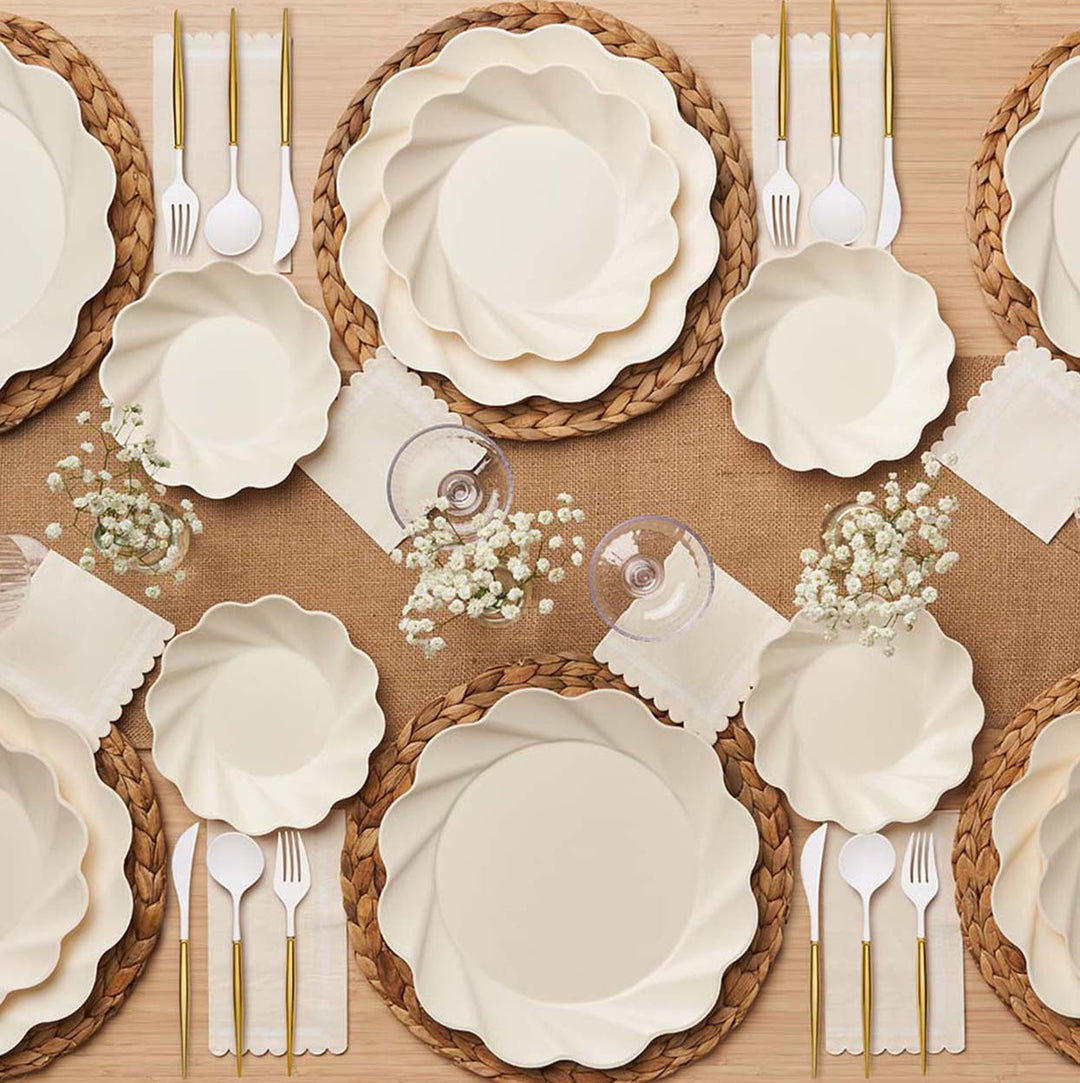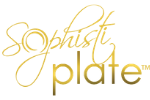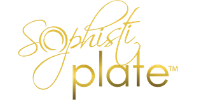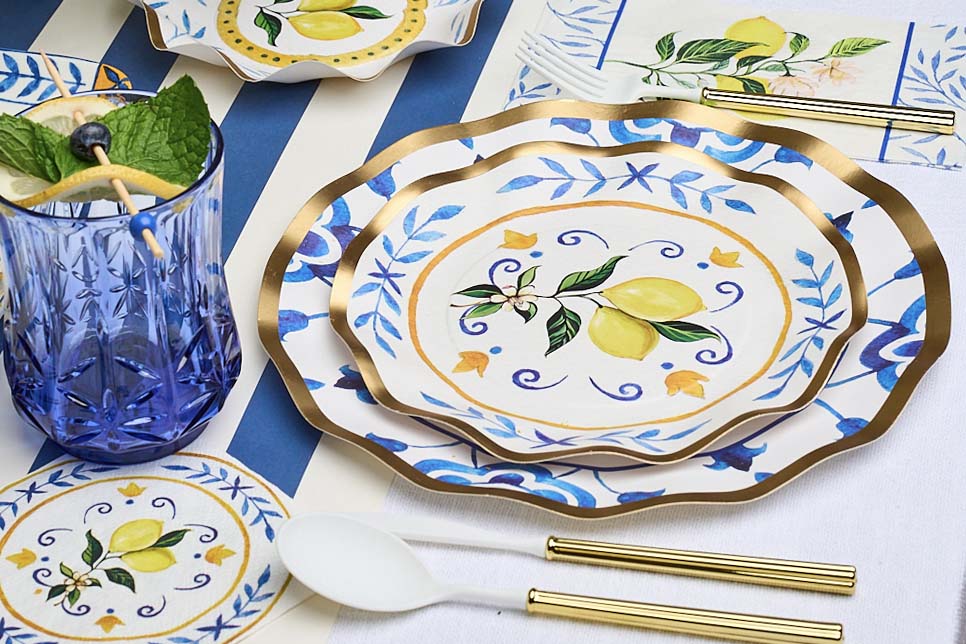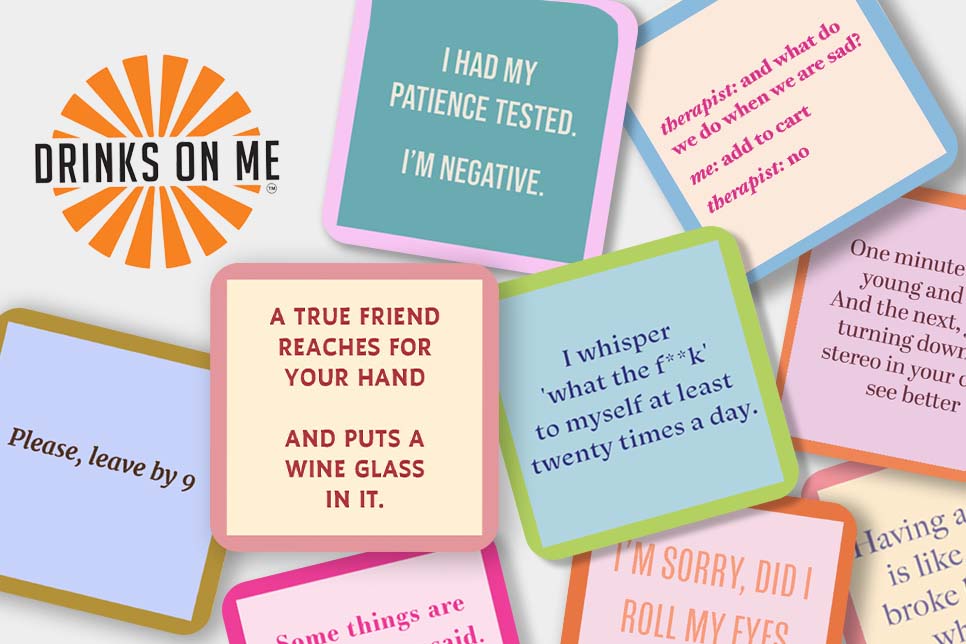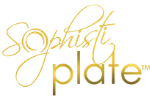Can Baking Cups Go in the Oven?
Whether you refer to them as baking cups, cupcake liners, or muffin papers, these handy inventions are traditionally used for making baked desserts. But why limit them to this one use? We think that baking cups are one of the most versatile kitchen tools and can be used beyond just making sweet treats.
Check out this guide from Sophistiplate to learn about the different types of baking cups, the many things you can do with them, and how to use them safely when baking.
Different Types of Baking Cups
If you’re trying to choose the best baking cups for you, then the material is probably the first thing to consider.
Here are some of the materials that baking cups come in.
Ceramic
If you’ve ever eaten soufflé before, then it’s very likely that it was out of a ceramic baking cup.
Ceramic roughly translates from Greek as “from pottery.” It describes objects—in our case, dishes—that have been formed with clay and hardened with fire. The ceramic materials that we’re all familiar with include porcelain, stoneware, and earthenware.
Porcelain originates from China and is considered to be the highest-quality ceramic. It’s made by firing clay at very high temperatures (up to 1,450 ℃). The resulting material is shiny, slightly translucent, and incredibly strong.
Stoneware is fired at approximately 1,200 ℃. It’s a durable, stone-like material that isn’t glazed, giving it a stone-like appearance.
Earthenware is fired at the lowest temperature (approximately 1,000 - 1,100 ℃). It is slightly porous and somewhat brittle. To prevent water from seeping through, earthenware must be glazed.
When it comes to ceramics, the best baking cups will be made out of porcelain. Not only do they look elegant, but can withstand very high temperatures.
Silicone
Silicone is a versatile material that can best be described as a hybrid of rubber and plastic.
Baking cups made from this material tend to be very flexible but still capable of holding up their shape. Plus, they’re non-stick, which makes them very appealing to home bakers.
But despite their convenience, there has been some concern that chemicals from silicone can seep into food during prolonged exposure (such as baking). While most experts say that silicone is completely safe for cooking, some studies show that there is some potential for contamination.
If this is something that concerns you, then it’s probably best to avoid using silicone baking cups.
Paper
High-quality paper baking cups are made from sturdy paper material. Since paper is a natural material, these baking cups are biodegradable, making them an eco-friendly option. Plus, there is no potential for them to be toxic when coming into contact with food.
When looking for the right paper baking cups, avoid flimsy liners and go for ones that are sturdy and can hold their shape. Because paper baking cups are disposable, you can get prints and colors for any occasion, which makes them our favorite choice—whether we’re baking or not!
8 Things You Can Do With Paper Baking Cups
While we all love a good cupcake, there is so much more that you can do with baking cups.
Here are eight of our favorite uses:
1. Make Cornbread
If you’re hosting a backyard BBQ, then you know the meal won’t be complete unless you have some cornbread. Use large baking cups with a gingham print to make the presentation extra festive. And if you need a good cornbread recipe, we got your back for that, too!
2. Make Savory Eggbites
Using standard-sized paper baking cups, grab your favorite omelet fillings (like cheese and bacon) and place them on the bottom of the cups. Pour whisked eggs on top about three-quarters of the way and bake for 15 minutes at 350°F. Omelets have never looked so cute!
3. Use Them as Dipping Cups
Grab some mini paper baking cups and fill them up with your favorite dips and sauces. This works well no matter the occasion. If you’re throwing a party, then individual-sized dipping cups can be handed out to your guests.
If you want to snack on some crudités at home without having to do the dishes, that’s an option, too. Sturdy paper cups won’t leak through, which should give you peace of mind when working with sauces.
4. Make Jell-O Shots
If you’re throwing a party, then there is nothing more fun than colorful Jell-O imbibed with your liquor of choice. Instead of standard clear plastic, use patterned mini baking cups to serve up these party favorites.
5. Serve Popcorn
If you can get your hands on some jumbo-sized baking cups, then they can make a gorgeous way to present popcorn (or any other party snack!). Being extra sanitary post-pandemic, we’re less likely to serve up a communal bowl and instead to go for individual portions. When it comes to that, jumbo baking cups can be a major life-saver.
6. Make Homemade Peanut Butter Cups
There’s nothing better than making your own treats. After all, you know exactly which ingredients you use and can even modify them to your dietary preferences.
If you’re a fan of peanut butter cups, then mini baking cups will mold the perfect shape for them. Not only are they super simple to make, needing only three ingredients, but they can be safely stored in the fridge for up to a week.
7. Create Drink Covers
If you’re throwing a party outdoors, then you know the importance of keeping bugs out of your drinks. While there are plenty of great options for cups that come with lids, it’s nice to have the freedom to use the right cups for the beverages you’ll be serving.
Luckily, paper baking cups are so versatile that they’ll do the trick for virtually any type of drink. Whether you’re serving lemonade in a mason jar or mimosas in a champagne flute, making a drink cover with a paper baking cup is simple. All you have to do is pick the right size and design for you and puncture a hole in it for a gorgeous drink cover.
8. Prepare Your Cooking Ingredients
If you watch cooking shows, you’ll notice that chefs prepare tiny bowls with carefully measured ingredients in them. Instead of buying small bowls just for this purpose, grab some paper baking cups before you start cooking and fill each one with the precise ingredients you’ll need. When it’s time to cook, you’ll be happy to not have to scramble for the spices you need to make your meal.
How to Safely Use Baking Cups
Even though baking cups are simple to use, it’s good to practice safety in the kitchen!
Here are some questions you might have about using baking cups.
Can Baking Cups Go in the Oven?
Whether they’re made out of ceramic, silicone, or paper, baking cups can definitely go in the oven!
While ceramic baking cups can generally withstand very high temperatures, when it comes to paper baking cups, there are limits to how high the oven temperature should be.
If you read Ray Bradbury’s Fahrenheit 451, then you might remember that paper can ignite at 451℉. While this is technically true, it’s not so clear-cut when it comes to paper baking cups. That’s because baking cups will usually be filled with some type of batter when they’re placed in the oven, which prevents them from catching on fire.
But if you’re baking cupcakes and muffins, then there’s no reason to worry: the recommended temperature for these baked treats is 350℉, which is far from any temperature that can pose a safety risk.
Can I Freeze Baking Cups?
While only some types of ceramic should be put into the freezer, silicone and paper baking cups are completely freezer-safe. So, if you want to plan ahead by making baked goods to eat later on, then baking cups are your best friend.
You can freeze pre-made muffins, cupcakes, or egg bites, and warm them up when you’re ready to eat them. You can also make batter ahead of time and freeze it right in the baking cups. When you’re ready to cook them, all you have to do is take them out and pop them in the oven for incredibly fresh baked goods.
Should I Grease Baking Cups?
Ceramic and silicone baking cups should definitely be greased with butter or oil to prevent food from sticking to them. Paper baking cups, on the other hand, come pre-greased. So, all you need to do is pour in the batter and start baking!
Let’s Get Baking
Because of their versatility, baking cups are one of our favorite kitchen tools. With dozens of paper baking cups in all sizes, colors, and designs, Sophistiplate has the perfect ones for you.
Sources:



